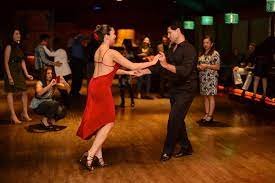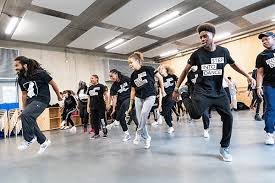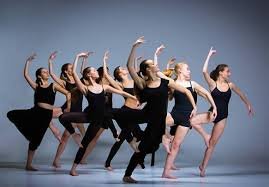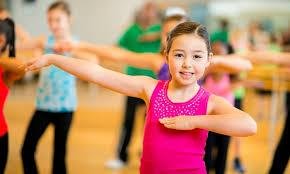What is A Ballet Dance Class? What Age is Best To Start Ballet Dance?
A ballet dance class is a structured environment where students are taught the fundamental techniques and principles of ballet. The class usually lasts for about an hour and a half, and is led by a trained ballet instructor. In this class, students learn basic steps and movements, such as pliés, tendus, and jetés, as well as more advanced techniques such as turns, jumps, and lifts.
The class typically begins with a warm-up routine designed to prepare the body for the physical demands of ballet. This warm-up may include stretching exercises to loosen tight muscles, as well as cardiovascular exercises to increase heart rate and promote circulation. The warm-up also serves as a time for students to mentally prepare for the class ahead, and to focus their attention on the task at hand.
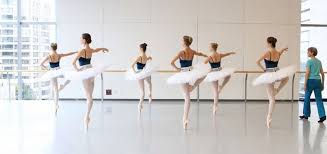
After the warm-up, the instructor will lead the class through a series of exercises that focus on specific aspects of ballet technique. For example, students may practice basic movements such as pliés, which involve bending and straightening the knees while maintaining proper alignment of the hips, knees, and feet. They may also practice tendus, which involve sliding the foot along the floor in various directions while keeping the leg straight and the toes pointed.
As the class progresses, students will learn more advanced techniques such as turns, jumps, and lifts. These movements require greater strength, balance, and coordination, and are often performed in combination with other movements. For example, students may learn how to perform a pirouette, which involves spinning on one foot while maintaining balance and control.
Throughout the class, the instructor will provide guidance and corrections to help students improve their technique. They may also demonstrate movements themselves, or use visual aids such as diagrams or videos to illustrate specific concepts. The instructor will also emphasize the importance of proper alignment and posture, which are essential for executing movements correctly and avoiding injury.
In addition to technique, ballet dance classes also emphasize artistry and expression. Students are encouraged to develop their own interpretation of the music and movement, and to express themselves through their performance. They may also learn how to work collaboratively with other dancers, and how to communicate effectively with their partner or group.
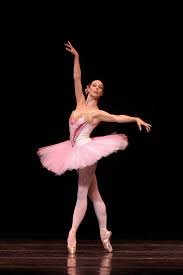
At the end of the class, students typically participate in a cool-down routine, which includes stretching exercises to help prevent muscle soreness and promote flexibility. They may also take time to reflect on the class and set goals for future improvement.
In summary, a ballet dance class is a structured environment where students learn the fundamental techniques and principles of ballet. Through a combination of warm-up exercises, technique drills, and expressive movements, students develop their physical skills, artistry, and teamwork abilities. The instructor provides guidance and corrections throughout the class to help students improve their technique and express themselves more effectively.
What Age is Best To Start Ballet Dance?
Ballet is a beautiful form of dance that requires discipline, hard work, and dedication. Many parents wonder at what age they should enroll their child in ballet classes. The answer to this question is not simple, as it depends on a number of factors such as the child’s physical and emotional maturity, their interest and aptitude for dance, and the goals of the parents and the child.
Most ballet schools start accepting students as young as three or four years old. At this age, children are often eager to explore the world around them and are full of energy and enthusiasm. They may have already developed a sense of rhythm and coordination, and may enjoy singing, dancing, and other creative activities. Ballet classes for this age group typically focus on developing gross motor skills, coordination, and spatial awareness, as well as introducing basic ballet positions and movements. Classes are usually short, lasting between 30 and 45 minutes, and are designed to be fun and engaging.

As children get older and progress in their ballet training, classes become more focused and structured. Around the age of six or seven, children may start to develop greater control over their movements and an increased ability to concentrate and follow instructions. At this age, ballet classes may become more challenging, with a greater emphasis on technique, musicality, and performance. Students will begin to learn more complex movements and combinations, as well as the vocabulary and terminology of classical ballet.
It is important to note that not all children develop at the same pace, and that physical and emotional maturity can vary greatly from child to child. Some children may be ready to start ballet classes at a younger age, while others may need more time to develop their coordination and attention span. It is also important to consider a child’s emotional readiness for ballet training. Ballet classes can be demanding both physically and mentally, and some children may not be ready to handle the pressure and expectations that come with dance training.
Parents should also consider their child’s interests and goals when deciding when to start ballet classes. Some children may have a natural talent and love for dance, and may be eager to start training at a young age. Others may be more interested in other activities, such as sports or music, and may not be as enthusiastic about ballet. It is important to encourage children to explore their interests and passions, and to support them in whatever activities they choose to pursue.

Ultimately, the decision of when to start ballet classes will depend on a number of factors, including the child’s physical and emotional maturity, their interest and aptitude for dance, and the goals of the parents and the child. It is important to choose a reputable ballet school with experienced teachers who can provide guidance and support throughout the training process. With dedication, hard work, and a love for dance, students of all ages can achieve success in the beautiful and rewarding world of ballet.
A ballet dance class is a structured environment where students are taught the fundamental techniques and principles of ballet. The class usually lasts for about an hour and a half, and is led by a trained ballet instructor. In this class, students learn basic steps and movements, such as pliés, tendus, and jetés, as well as more advanced techniques such as turns, jumps, and lifts.
The class typically begins with a warm-up routine designed to prepare the body for the physical demands of ballet. This warm-up may include stretching exercises to loosen tight muscles, as well as cardiovascular exercises to increase heart rate and promote circulation. The warm-up also serves as a time for students to mentally prepare for the class ahead, and to focus their attention on the task at hand.

After the warm-up, the instructor will lead the class through a series of exercises that focus on specific aspects of ballet technique. For example, students may practice basic movements such as pliés, which involve bending and straightening the knees while maintaining proper alignment of the hips, knees, and feet. They may also practice tendus, which involve sliding the foot along the floor in various directions while keeping the leg straight and the toes pointed.
As the class progresses, students will learn more advanced techniques such as turns, jumps, and lifts. These movements require greater strength, balance, and coordination, and are often performed in combination with other movements. For example, students may learn how to perform a pirouette, which involves spinning on one foot while maintaining balance and control.
Throughout the class, the instructor will provide guidance and corrections to help students improve their technique. They may also demonstrate movements themselves, or use visual aids such as diagrams or videos to illustrate specific concepts. The instructor will also emphasize the importance of proper alignment and posture, which are essential for executing movements correctly and avoiding injury.
In addition to technique, ballet dance classes also emphasize artistry and expression. Students are encouraged to develop their own interpretation of the music and movement, and to express themselves through their performance. They may also learn how to work collaboratively with other dancers, and how to communicate effectively with their partner or group.

At the end of the class, students typically participate in a cool-down routine, which includes stretching exercises to help prevent muscle soreness and promote flexibility. They may also take time to reflect on the class and set goals for future improvement.
In summary, a ballet dance class is a structured environment where students learn the fundamental techniques and principles of ballet. Through a combination of warm-up exercises, technique drills, and expressive movements, students develop their physical skills, artistry, and teamwork abilities. The instructor provides guidance and corrections throughout the class to help students improve their technique and express themselves more effectively.
What Age is Best To Start Ballet Dance?
Ballet is a beautiful form of dance that requires discipline, hard work, and dedication. Many parents wonder at what age they should enroll their child in ballet classes. The answer to this question is not simple, as it depends on a number of factors such as the child’s physical and emotional maturity, their interest and aptitude for dance, and the goals of the parents and the child.
Most ballet schools start accepting students as young as three or four years old. At this age, children are often eager to explore the world around them and are full of energy and enthusiasm. They may have already developed a sense of rhythm and coordination, and may enjoy singing, dancing, and other creative activities. Ballet classes for this age group typically focus on developing gross motor skills, coordination, and spatial awareness, as well as introducing basic ballet positions and movements. Classes are usually short, lasting between 30 and 45 minutes, and are designed to be fun and engaging.

As children get older and progress in their ballet training, classes become more focused and structured. Around the age of six or seven, children may start to develop greater control over their movements and an increased ability to concentrate and follow instructions. At this age, ballet classes may become more challenging, with a greater emphasis on technique, musicality, and performance. Students will begin to learn more complex movements and combinations, as well as the vocabulary and terminology of classical ballet.
It is important to note that not all children develop at the same pace, and that physical and emotional maturity can vary greatly from child to child. Some children may be ready to start ballet classes at a younger age, while others may need more time to develop their coordination and attention span. It is also important to consider a child’s emotional readiness for ballet training. Ballet classes can be demanding both physically and mentally, and some children may not be ready to handle the pressure and expectations that come with dance training.
Parents should also consider their child’s interests and goals when deciding when to start ballet classes. Some children may have a natural talent and love for dance, and may be eager to start training at a young age. Others may be more interested in other activities, such as sports or music, and may not be as enthusiastic about ballet. It is important to encourage children to explore their interests and passions, and to support them in whatever activities they choose to pursue.

Ultimately, the decision of when to start ballet classes will depend on a number of factors, including the child’s physical and emotional maturity, their interest and aptitude for dance, and the goals of the parents and the child. It is important to choose a reputable ballet school with experienced teachers who can provide guidance and support throughout the training process. With dedication, hard work, and a love for dance, students of all ages can achieve success in the beautiful and rewarding world of ballet.

